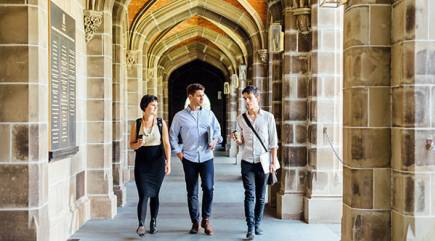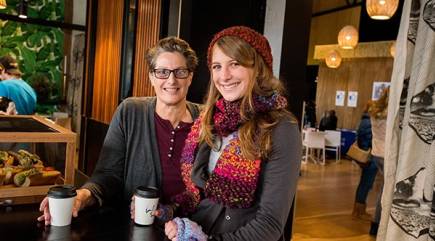 |
| Reviews and Templates for Expression We |
The jobs of 2027
In 10 years jobs we’re familiar with now will change as new technologies impact on how we work. Professionals like nurses, architects, artists and farmers will all need new skillsets to keep up with the technological revolution
Over the next decade, the way we do our jobs will change dramatically. The
impact of new and emerging technologies, shifting economics, even
environmental pressures mean most professions are in a continual state of
change – with many struggling to keep up with the pace of transformation.
And for many people working across most industries – and those in the future
– they must be ready and willing to keep themselves up-to-date with the
latest information and training in a fast-changing environment.

For example,
genome
sequencing and precision therapies are on the way to making cancer a
manageable condition rather than a lethal one. But it also means today’s practicing nurses will need to become quickly
competent in tomorrow’s advances.
We spoke to five professionals across five industries about how their jobs
are changing and what the next generation needs to do to prepare, adapt and
thrive.
AGRICULTURE
One third of our planet’s land
is used for
agriculture.
It’s a lot, but bear in mind that 50 per cent of Earth’s landmass – desert,
tundra, mountains and glaciers – is unusable. And our need for what
agriculture provides doesn’t stop with land.
More than
two thirds of
the world’s freshwater
is committed to agriculture and farming. And despite all of this, up to half
of the global harvest is lost to insects or spoilage.
“These pressures, all taken together, intensify the drive to put the most
intelligent minds into agricultural careers.”
The head of the University of Melbourne’s School of BioSciences, Professor
Herbert Kronzucker, has worked on issues of world hunger since his
post-doctorate, concentrating on rice as well as some of the most important
crops that feed the world’s poor.
“The reason modern science needs to be brought to bear on this is because it
would not be possible to feed the planet’s population of 7.5 billion with
outdated farming methods,” he says.
Brendan Torpey is an example of those “most intelligent minds” Professor
Kronzucker is talking about. Growing up on a potato and prime lamb farm at
Newlyn, near Ballarat in Victoria, he holds a Bachelor of Agriculture from
the University of Melbourne as well as a Graduate Certificate in Precision
Agriculture from the University of New England.
He is now a lead adviser for the agricultural consulting firm Precision
Agriculture and advises farmers, among other things, on grid soil mapping.
This is a process that allows farmers to generate digital maps identifying
soil fertility and yield limiting factors which can inform the decision
about where and when to plant.
“Agriculture is changing ever more rapidly and there are so many pressure
points coming on to a business that you have to be adaptive,” says Mr
Torpey.
“The most successful operators out there are those who are challenging the
norm, trying new things and approaches and testing new ideas.”

An engineer engineer checking growth chart for organic lettuce crop in LED
greenhouse. Picture: Getty Images
ARCHITECTURE
While Ariani Anwar was studying for a BA in Art History, she enrolled in the
Melbourne Juris Doctor, hoping to do Law as her post-graduate qualification.
Instead she found herself doing Architecture as breadth – a subject offered
to students to provide insight and experience in disciplines away from their
main area of study.
“It’s not often you get the opportunity to so something outside your major
discipline,” she says. “But I realised it was the direction I wanted to
take.”
Ms Anwar switched her focus to the Master of Architecture. It’s a rigorous
and challenging course, but she believes students coming from outside the
traditional pathway offer new perspectives. “While you may not have the
design skills initially, you have a different way of thinking, which is
refreshing.”
And the profession will need these diversity of perspectives, says Paul Loh,
lecturer in Digital Architecture design at the University of Melbourne. “In
a sense, the profession is being pushed sideways with the expansion of
information,” he says.

New technologies like 3D printing offer new opportunities for architects.
Picture: iStock
“There’ll always be a strong call for people doing building design as
architectural practice, but there’ll be a much more segmented way of dealing
with architectural practice.”
Mr Loh says new technologies in construction and manufacture, including 3D
printing, offer new opportunities for architects, but equally, they present
challenges. Some might shift into animation, set design, graphics and
branding; while others specialise in “wayfinding” – designing ways to move
through spaces such as airports or shopping complexes.
There are also opportunities in audio-visual technologies, from gaming to
“walking” clients through designs in virtual reality.
“I think architecture is multi-disciplinary and inter-disciplinary now,”
says Ms Anwar, now with respected firm John Wardle Architects. “By making a
building you’re impacting the urban realm, aspects of sustainability; you’re
impacting on people’s experience and their lives.
“So having a breadth of understanding about culture, society and environment
is essential in that changing professional environment.”
LAW
Advances in technology and increasing specialisation are transforming the
practice of law.
According to Associate Professor Jeannie Marie Paterson from the Melbourne
Law School, a lot of work formerly done by junior lawyers – discovery for
litigation, document checking and due diligence – is being done by
technology, including artificial intelligence.
It was reported earlier this year that US banking giant JP Morgan is set to
save an estimated 360,000 hours of paid legal work a year
by using an
artificial intelligence program
to vet its commercial loan agreements.
“My view is that it’s a lot of the drudge work gone and lawyers will
increasingly be required to use their higher-order analytical skills, and
obviously their interpersonal skills, because that’s the bit a machine can’t
replace,” says Dr Paterson.
And further rapid change is inevitable, Dr Paterson forecasts. In the US,
technology is being used that can predict case outcomes, based not on the
parties, but on the day and time a case is heard. Sophisticated dispute
resolution tools may also mean less litigation.
But specialisation is also playing a role in industry transformation.
Sarah Hennebry’s path to a career as a Senior Associate Patent Attorney was
a complicated one.
She began studying at the University of Melbourne in a combined degree in
Science, majoring in Biochemistry and Molecular Biology, and in Arts. This
was followed by a Doctor of Philosophy at the Faculty of Medicine and,
finally, a Masters in Intellectual Property Law.
After a post-doctoral stint at the
Baker Heart
and Diabetes Institute
– Ms Hennebry now prosecutes Australian and foreign patent applications and
drafts patent prescriptions – specialising in biotechnology and
pharmaceuticals.
An interesting and unexpected skillset that combined means Dr Hennebry is a
unique expert in her field.
“It’s a constant learning experience and I do a lot more science now,” says
Dr Hennebry.
“Whether it’s new developments in breeding new types of crop or developing
medicines, I understand the way technology is being used in society in a
much better way than I ever had.”
NURSING
Over the last decade, technological advances have helped nurses care for
patients more efficiently and safely. And those advances are likely to
accelerate over the coming decade.
For the next generation of nurses, the wards and hospitals they work in are
going to be vastly different environments, with a new set of pressures.
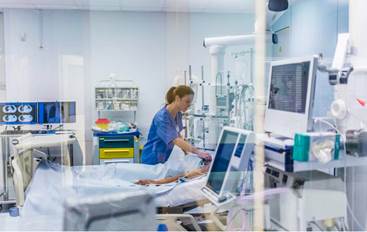
Diverse professional backgrounds mean the next generation of nurses can
embrace new models of working. Picture: iStock
Melbourne’s Victorian Comprehensive Cancer Centre is a case in point. $50
million Australian dollars was earmarked for new technologies, including its
internal communication system. Traditional patient alert buttons buzz the
nearest nurse’s station when pressed – but the VCCC uses an integrated
messaging suite that sends nurse calls from patients and medical alerts to
staff through a handset.
It allows nurses to prioritise care, and differentiate between a patient
wanting a glass of water, or letting medical staff know they’re in pain.
For Aliesha-Jane Fejgl, who’s studying her Masters of Nursing Science at the
University of Melbourne on a Patricia Hyams scholarship, there’s a balance
to be struck between the march of technology and compassion.
“With the advances in technology, robotics, genetics and artificial
intelligence, we can achieve simplified, streamlined and cost-effective
healthcare objectives,” she says.
“But we can’t lose the things you cannot quantify; things we should never
put a price tag or time constraints on. Our humanity, our empathy and our
heart.”
But here, like law, diversity plays an important part.
According to Associate Professor Marie Gerdtz who heads up the University’s
Department of Nursing, nurses now come to the course with undergraduate
degrees in science, the arts and humanities, even computer science and
engineering.
These diverse backgrounds help graduates embrace new models for in-home
care, care co-ordination for chronic disease and the rise of the nurse
practitioner and clinical consultant.
“What we need are practitioners who have really great communication skills,
are culturally aware, and have the scientific background to inform their
assessment and care-planning,” says Dr Gerdtz. “And the technology is there
to support them.”
EARLY CHILDHOOD EDUCATION
Think of a climbing frame in a kindergarten. To most of us it might be a
simple structure promising children exercise and adventure, fun and games.
To senior lecturer Dr Caroline Cohrssen, whose research interests include
young children’s demonstrations of mathematical thinking, that frame
represented a tool and opportunity to explore positional language, such as
“under”, “through”, “beneath” and “over”.
But for both Dr Cohrssen, and her Melbourne Graduate School of Education
colleague Professor Tricia Eadie, it also emphasises a key element in early
childhood education – intentional teaching.
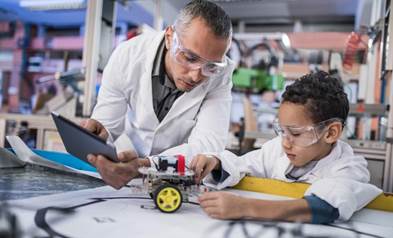
Early childhood education is rapidly evolving, through advances in
technology and policy. Picture: iStock
The
Early Years
Learning Framework
defines intentional teaching as a skill that “involves educators being
deliberate, purposeful and thoughtful in their decisions and action”. It’s
the opposite of teaching by rote or traditional methods simply because they
have always been done that way.
Intentional teachers have an important understanding of childhood
development and the wide range of guided experiences which lead children to
specific academic goals. It is a skill that will be increasingly used into
the future, changing a child’s experiences, expectations, environment, or
social groups to maximise learning.
“We anticipate that early childhood education professionals will require
increased discipline-specific content knowledge as well as effective
teaching strategies,” says Dr Cohrssen. “This is consistent with current
research that highlights the importance of high quality, intentional
teaching and learning.”
Professor Eadie adds: “We absolutely expect our students to have extremely
good face-to-face skills working in centres with children and families.
“But we have very high expectations of them understanding child development,
of understanding the curriculum, that all learning experiences are
intentional – that you can have a teaching intent behind every experience.”
Like everything, early childhood education is rapidly evolving, through
technology and Government-mandated
National
Quality Standards
and Early Years Learning Frameworks.
“Play will remain the conduit for learning, but the focus will be on
intentional, supportive learning through play,” says Dr Cohrssen. “Equipping
children to be happy and competent and successful in their lives now and in
the transition to school and beyond.”
ARTS
Out on the further reaches of where art intersects with science, fascinating
and bizarre things can happen.
Increasingly, Arts graduates are finding their way into work in the once
tightly-guarded fields of science and technology and Dr Ryan Jefferies is a
case in point. After completing a PhD in infectious disease research,
specialising in molecular parasitology, he went into the laboratory,
conducting postdoctoral research in Australia and the UK.
But then, five years ago, he shifted focus, becoming curator at the Harry
Brookes Allen Museum of Anatomy and Pathology at the University of
Melbourne. Last year, he became creative director for Science Gallery
Melbourne’s inaugural season of
Blood.
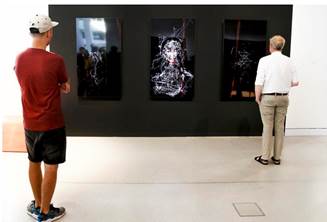
Innovations like the Science Gallery aim to educate about science through
art. Picture: Getty Images
“I have always been interested in the connection between science and art,”
he says. “People think they’re very discrete disciplines and like to box
them, but for me science is very creative and there’s lots of similarities
in the thought processes of both artists and scientists.”
In the future, he says, up to 75 per cent of jobs will be in the Science,
Technology, Engineering and Maths – or STEM - disciplines.
The Science Gallery, a concept that began in Dublin and is being replicated
around the world, aims to add Arts – so STEM becomes STEAM.
“Looking ahead, society faces great challenges – climate change, antibiotic
resistance, even the threat of Artificial Intelligence to the human species.
These are what young adults are going to be tackling in the future through
their professions,” says Dr Jefferies.
“How do you equip those people to meet those challenges? We can’t look at it
in traditional ways anymore – it’s around hybrid thinking, equipping young
adults with inter-disciplinary skills, of really mixing things up to
encourage creativity and innovation.”
The model is artists becoming science communicators, he adds, and we will
see that more in the future.
“Too often, science can seem like gobbledygook, bringing artists in to
reinterpret that, to develop an artwork that is engaging and accessible and
less confronting is a way to get the general public thinking about these
concepts.”
|
|
|
|
Copyright remains with the original authors |
